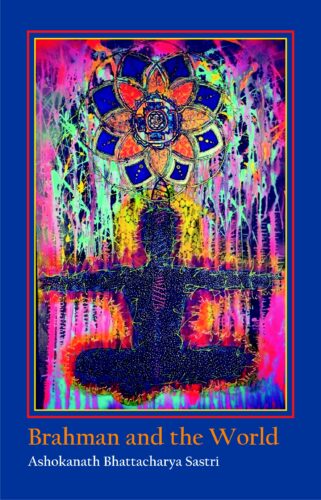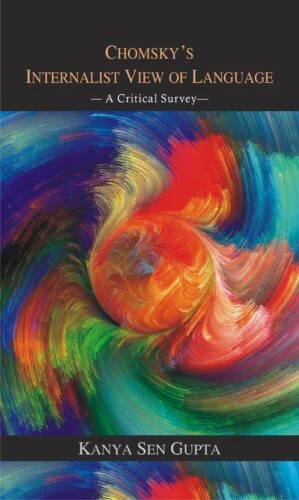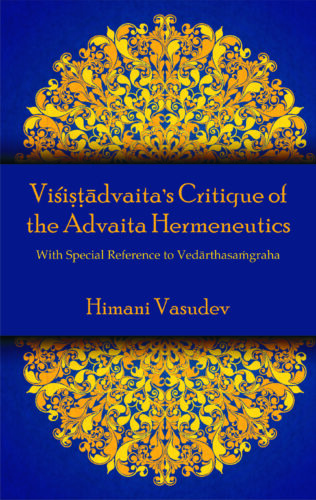Showing all 7 results

The Ved?nta has been rightly called the Finest Fruit of Indian Thought and the Upani?ads as the Finer Flowers. Ved?nta grows out of the teachings of the Upani?ads and passes into the various systems in the writings of ?a?kara, Bh?skara, R?m?nuja, Madhva and Vallabha, the great founders of Advaita, Bhed?bheda, Vi?i???dvaita, Dvait?dvaita and ?uddh?dvaita, respectively. However, there is a perception among Orientalists that while the Upani?ads favour the Monistic doctrine, B?dar?ya?as Brahmas?tra fundamentally opposes it on some of the most crucial points.
The book thus delves deep into the philosophies of both B?dar?ya?a and ?a?kara in enunciating the essential features of Brahman and Its association with the world. It thus discusses topics such as what sort of cause Brahman is?, and what sort of material causality is to be ascribed to It? It also addresses the conflicting views on the nature of Brahman like that of Vivarttav?da and of R?m?nujas Sagu?a-Brahman.
This book proposes to take up the question of Universal Causation to examine thoroughly as how far it is right to regard Brahman as the Universal Cause and how far s?trak?ra himself lent his support to each of the inter-conflicting schools of Ved?nta. This book should, therefore, benefit all who are devoted to the philosophic teachings of Advaita Ved?nta and its preceptors.
“The Vedānta has been rightly called the Finest Fruit of Indian Thought and the Upaniṣads as the Finer Flowers. Vedānta grows out of the teachings of the Upaniṣads and passes into the various systems in the writings of Śaṅkara, Bhāskara, Rāmānuja, Madhva and Vallabha, the great founders of Advaita, Bhedābheda, Viśiṣṭādvaita, Dvaitādvaita and Śuddhādvaita, respectively. However, there is a perception among Orientalists that while the Upaniṣads favour the Monistic doctrine, Bādarāyaṇa’s Brahmasūtra fundamentally opposes it on some of the most crucial points.
The book thus delves deep into the philosophies of both Bādarāyaṇa and Śaṅkara in enunciating the essential features of Brahman and Its association with the world. It thus discusses topics such as what sort of cause Brahman is?, and what sort of material causality is to be ascribed to It? It also addresses the conflicting views on the nature of Brahman like that of Vivarttavāda and of Rāmānuja’s Saguṇa-Brahman.
This book proposes to take up the question of Universal Causation to examine thoroughly as how far it is right to regard Brahman as the Universal Cause and how far sūtrakāra himself lent his support to each of the inter-conflicting schools of Vedānta. This book should, therefore, benefit all who are devoted to the philosophic teachings of Advaita Vedānta and its preceptors.”
Chinese philosophy is highly unique in its profound sense of moral thinking. The fundamental thesis of Chinese thinking is interdependence and mutual relationships between entities, human and natural. For great thinkers like Confucius and Lao zi a human being is a relatively constituted and situated self. What is important in social living is correlative thinking and resonance, complementary approach to differences, action guiding nature of judgment and the effective appropriation of naturalness and spontaneity in the interrelations between individuals, human beings and nature. The book is a prelude to study the significance of personal excellence and social harmony embedded in Chinese philosophical tradition.

This book analyses Chomsky’s philosophy of language in the context of its difference from Wittgenstein’s account of language, and also other views of language which are in line with Wittgenstein explanation. And it aligns with the philosophy of Wittgenstein and his colleagues.
This volume endeavours to get at Chomsky’s philosophy of language in the context of its difference from Wittgenstein’s account of language, and also other views of language which are in line with Wittgenstein explanation. Since Chomsky’s preference is grammatical or structural approach to language, which is innate, he interprets knowledge of language as knowledge of rule-governing sentence formation. Obviously, Chomsky approves of Private Language with no concern for the theory of communication which is rooted in the use of language. In other words, Chomsky is not interested in successful communication which takes place only in social practices. But, according to what we have discussed in this book, successful communication or speech act is possible by what people normally do according to social convention.
In short, since Chomsky depends upon the structure or innateness of internalist approach to language, he cannot be accounted for social interpretation of language, which is needed for successful communication. As in this book, we are committed to public or socially approved language of Wittgenstein and his colleagues which is essential for communication, we walk away from Chomsky’s structural or mentalistic or innatist interpretation of language.
This book covers most of the basic topics of Data Structures. The logic behind every program of data structures with inclusion of flowcharts, pseudo codes and programs. The programs are written by using the concepts of object oriented programming language in C++ which are verified and tested. The topics covered in this book are linked list, stacks, queue, binary tree, threaded binary tree, traversals – BFS & BFS, different sorting methods, hashing and AVL. We have also explained the basic concepts of OOPs. In this book, we have explained the hashing and AVL and we expect that students will try to write the small programs in these topics as well. Individual topics of programs cover the pseudo code, diagrammatic representation and the concepts of that particular topic. We have tried to explain the topics in a very simple manner and we hope that the students will be able to understand the topics well. We would suggest that after going through the entire concepts of data structures, every student should try to solve the assignment given at the end of this book and I am very sure that if student does this exercise, he will never forget this subject and will start loving this subject. With this exercise, not only the basics of data structures but also their concepts of different programming languages will also be made stronger. Our best wishes to the students….

This volume delves upon the Vakyapadiya of Bhartrhari, written in fifth century ce, as a contnuity of the theory and praxis of Panini and Patanjali on Sanskrit grammar and Indian language philosophy. It makes an attempt to explore and analyse some issues such as meaning of language, theory of sphota, and conditions and context of meaning.
The study of grammar and linguistic philosophy had its origin in the Vedic period, at least in the second millennium bce. The Vakyapadiya of Bhartrhari, an authoritative Sanskrit text written in the fifth century ce, contains reflections on the subject matter of language and grammar, thus the philosophy of language. Interpretation of communication is one of the principal objectives of Bhrtrhari’s philosophy of language. His goal is to interpret the communication of all living things, be it a man or an animal, or a yogi or a baby.
Bhartrhari represents a rich tradition of Indian philosophy of language that he inherited from Panini and Patanjali. The West, for all practical purposes, lagged behind in grammar, literary theories, philosophy of language and with the problems of meaning, even at the dawn of the twentieth century, when the Indian Grammarians made penetrating studies on the same even before the common era.
This volume delves upon “meaning” discussed in the Vakyapadiya as a continuity of the great Indian literary tradition, philosophy and grammar. In the process, it explores and analyses some issues such as meaning in Indian philosophy of language, theory of sphota, and conditions and context of meaning.
The study of grammar and linguistic philosophy had its origin in the Vedic period, at least in the second millennium BCE. The Vakyapadiya of Bhartrhari, an authoritative Sanskrit text written in the fifth century CE, contains reflections on the subject matter of language and grammar, thus the philosophy of language. Interpretation of communication is one of the principal objectives of Bhrtrhari’s philosophy of language. His goal is to interpret the communication of all living things, be it a man or an animal, or a yogi or a baby. Bhartrhari represents a rich tradition of Indian philosophy of language that he inherited from Panini and Patatijali. The West, for all practical purposes, lagged behind in grammar, literary theories, philosophy of language and with the problems of meaning, even at the dawn of the twentieth century, when the Indian Grammarians made penetrating studies on the same even before the common era.

Vedānta is the very heart of Indian philosophy. The various schools of Vedānta have been explored under diverse categories including ontological and epistemological, but they are a storehouse of so much more. “Hermeneutics” in simple words can be the theory of interpretation and this book has studied the critique of the Advaita hermeneutics by Rāmānujācārya based on Vedic statements like tat tvam asi, tadaikāta bahu syāma, neha nānāsti kiñcana and many others in his book Vedārthasaṁgraha which mirrors a complete vision of the Upaniṣads. Rāmānujācārya has shown how the Śruti statements can be seen in a coherent manner resolving the conflicts of bheda and abheda. The nature of a word and its various śaktis, followed by how successful are words in describing the concepts of sat, cit and ānanda, are also discussed here.
This book is an initial effort in the hermeneutic studies of Indian texts, which have been kept limited to the scope of philosophy, theology or religion alone. Many more linguistic treasures can be found here.
Vedānta is the very heart of Indian philosophy. The various schools of Vedānta have been explored under diverse categories including ontological and epistemological, but they are a storehouse of so much more. “Hermeneutics” in simple words can be the theory of interpretation and this book has studied the critique of the Advaita hermeneutics by Rāmānujācārya based on Vedic statements like tat tvam asi, tadaikāta bahu syāma, neha nānāsti kiñcana and many others in his book Vedārthasaṁgraha which mirrors a complete vision of the Upaniṣads. Rāmānujācārya has shown how the Śruti statements can be seen in a coherent manner resolving the conflicts of bheda and abheda. The nature of a word and its various śaktis, followed by how successful are words in describing the concepts of sat, cit and ānanda, are also discussed here.
This book is an initial effort in the hermeneutic studies of Indian texts, which have been kept limited to the scope of philosophy, theology or religion alone. Many more linguistic treasures can be found here.
| × |
|
Ancient Gods and Heroes of East and West 1 x ₹810.00 |
| × |
|
Determinism in Sramanic Traditions 1 x ₹585.00 |